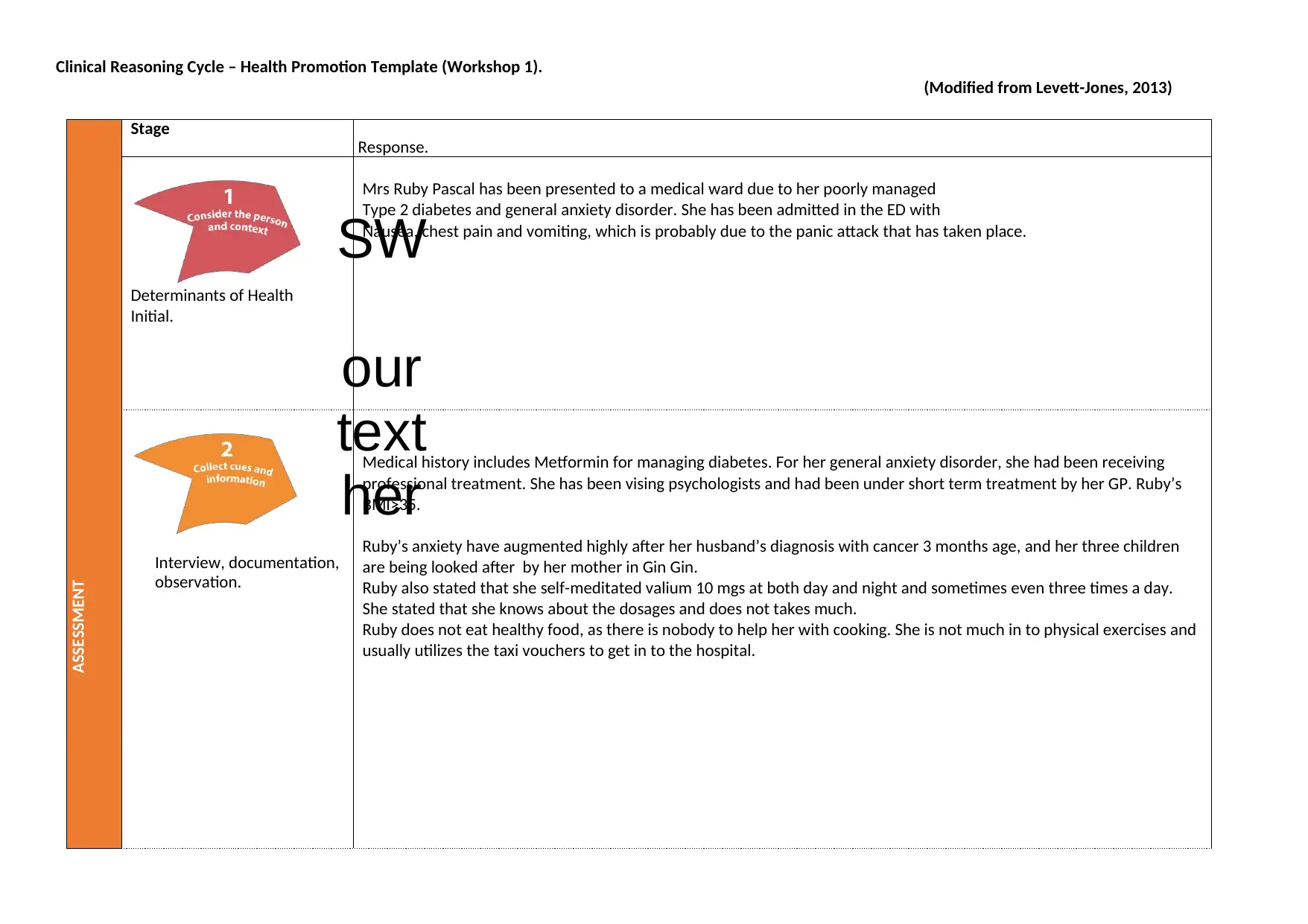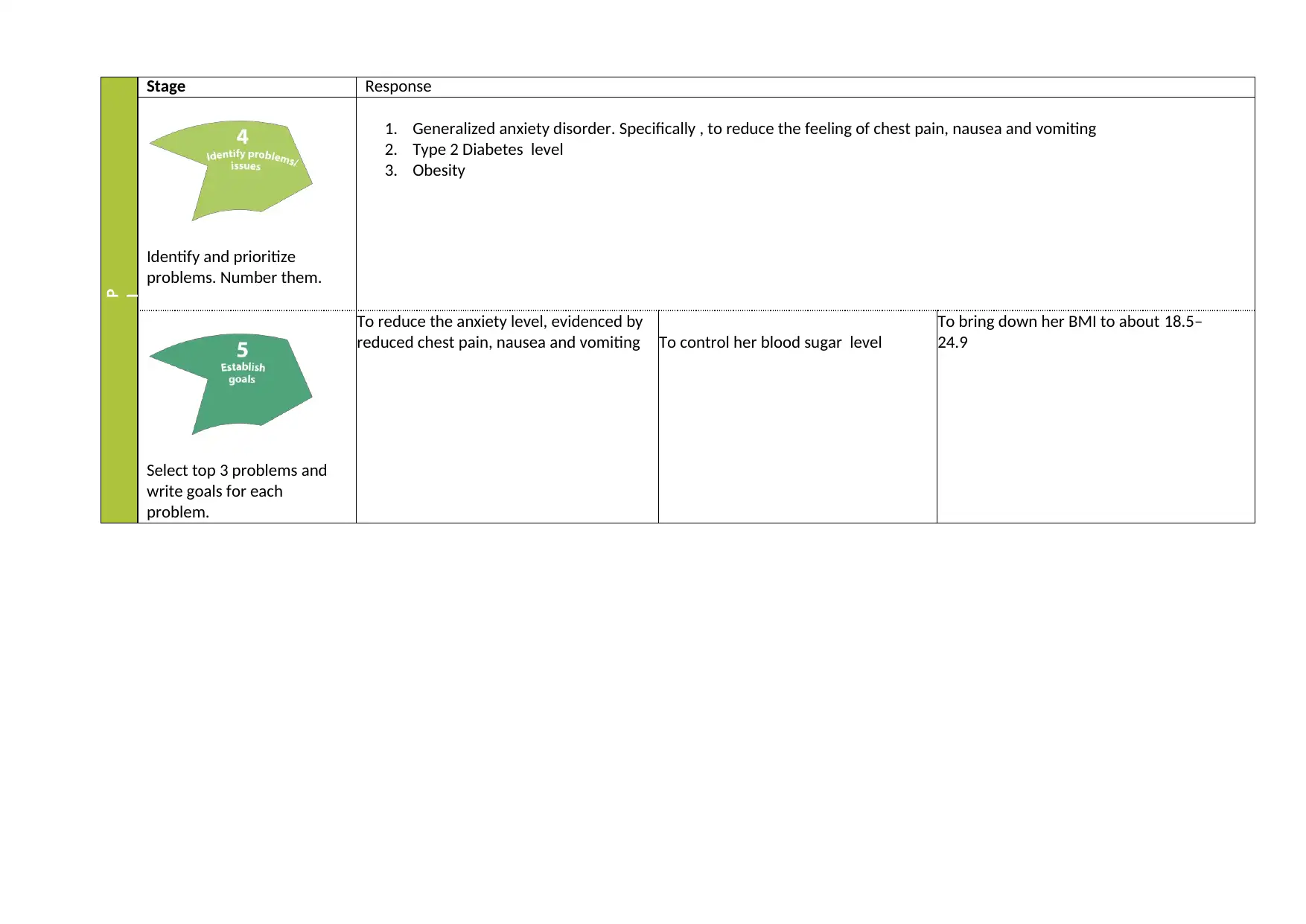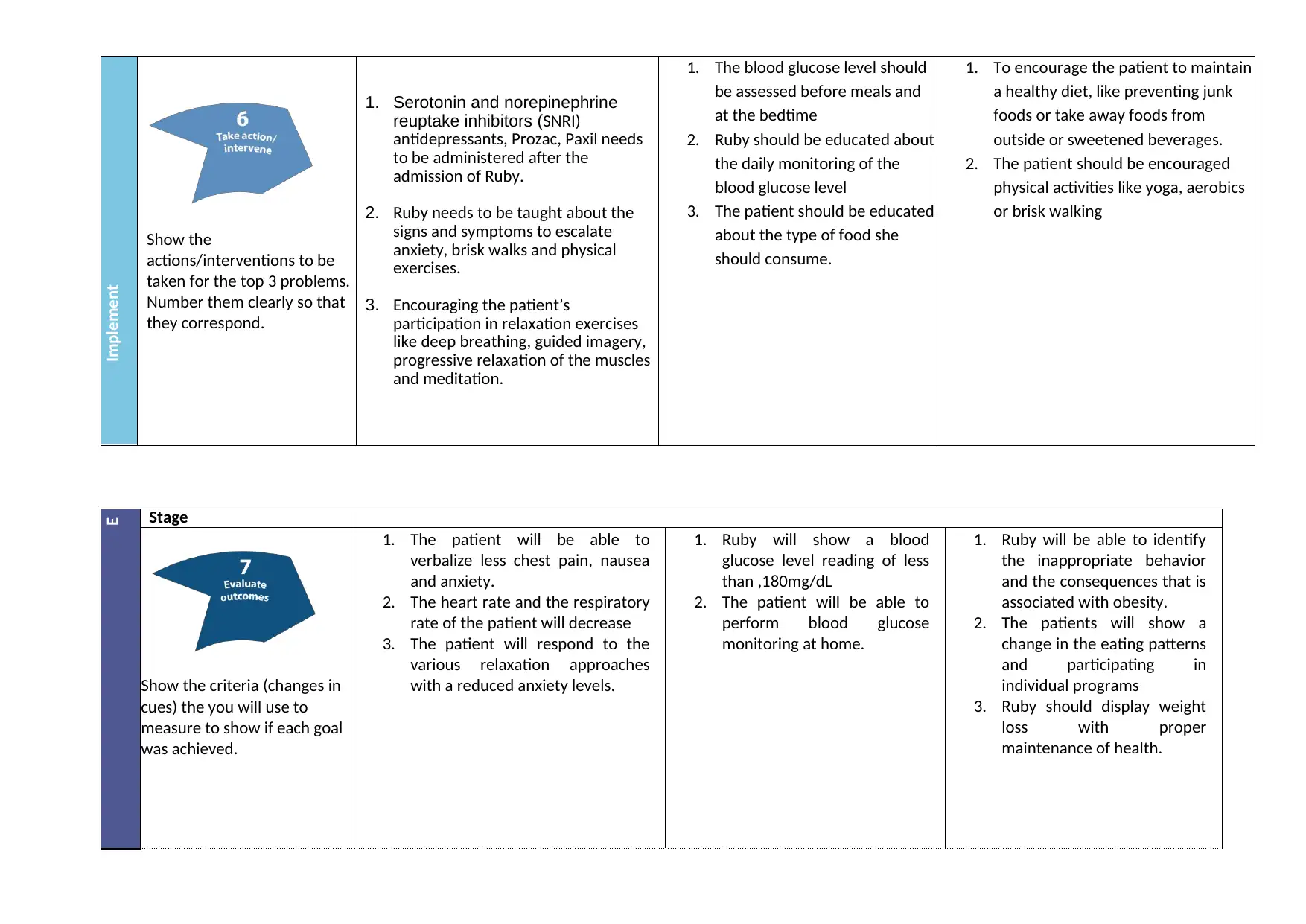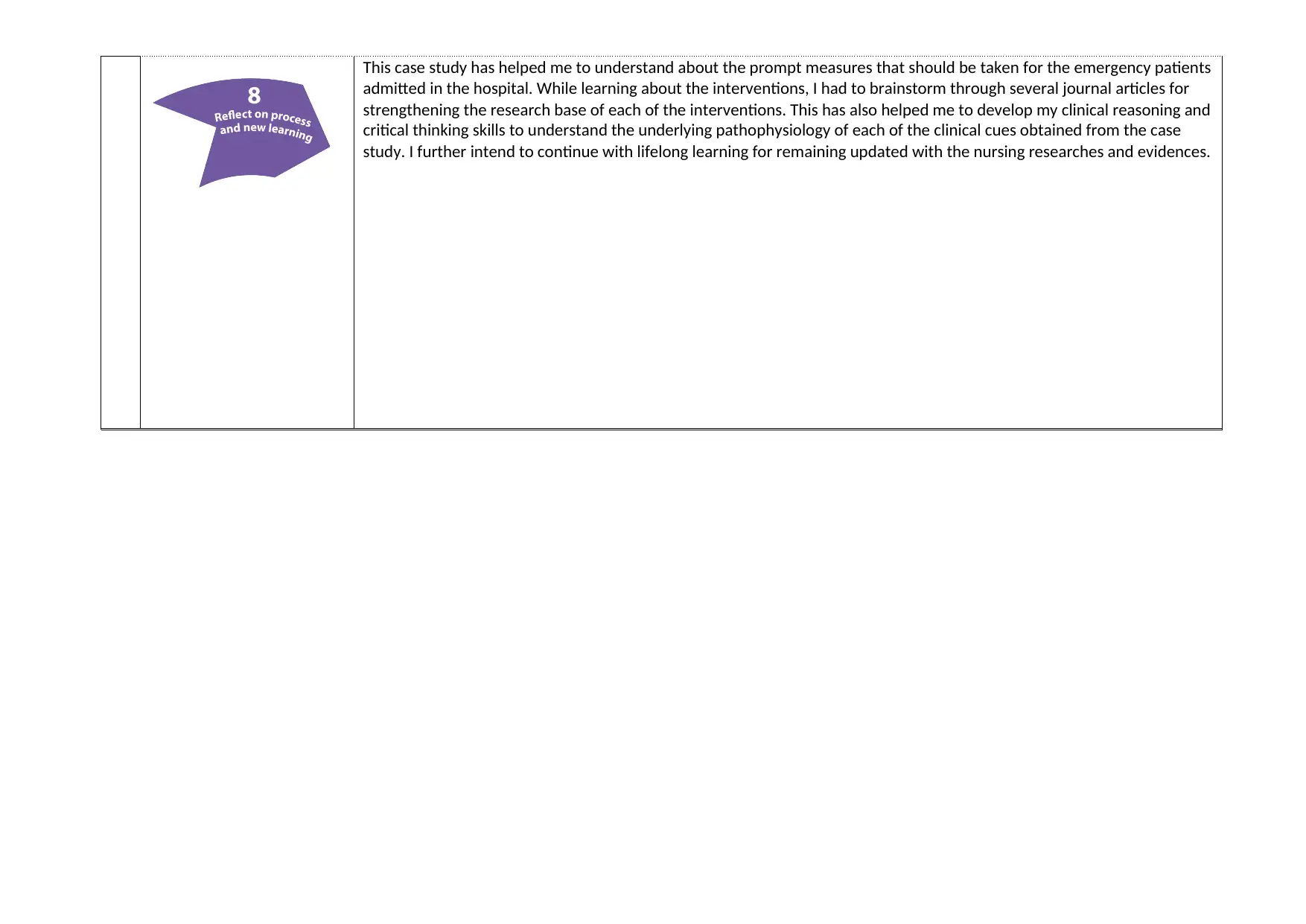NSB303 Assessment 1: Ruby Pascal Health Promotion Plan
VerifiedAdded on 2022/09/23
|5
|840
|25
Case Study
AI Summary
This case study presents a health promotion plan for Mrs. Ruby Pascal, a patient experiencing poorly managed Type 2 diabetes, generalized anxiety disorder, and obesity. The student, acting as a registered nurse, utilizes the Clinical Reasoning Cycle to assess Ruby's condition based on handover information and a simulation, identifying key health concerns such as uncontrolled diabetes, anxiety, and overweight status. The plan prioritizes problems and sets specific goals, including reducing anxiety, controlling blood sugar levels, and lowering BMI. Interventions are proposed, such as medication, patient education on diet and exercise, and relaxation techniques. The evaluation stage outlines measurable criteria, such as reduced chest pain, normalized blood glucose levels, and weight loss, to assess the effectiveness of the interventions. The student reflects on the learning experience, emphasizing the development of clinical reasoning and critical thinking skills through the analysis of the case study and relevant research.
1 out of 5












![[object Object]](/_next/static/media/star-bottom.7253800d.svg)